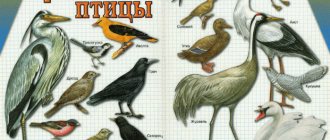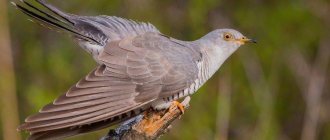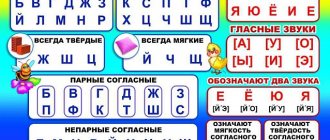A - Alyonushka’s “crying”; her mouth is open as wide as the ends of the letter A - aaa.
O - the child “has a toothache”, he “moans”: ooh; his lips are shaped like the letter O.
U - locomotive whistle; children hum with their mouths open and their lips stretched out like a tube; their attention is drawn to the shape of the letter U, which is also elongated and looks like a tube (ball).
And - two vertical sticks depict the upper and lower lips in a smile, the mouth is slightly open; children imitate the cry of a foal: eee.
E - a face with a drooping lower jaw, the tongue is even visible in the mouth - the letter E also has a wavy crossbar in the middle; E - distant echo.
Y - based on the visual image of the letter I (the mouth is open “like a finger”), invite children to open their mouths even wider so that the rounded end of the tongue is visible inside, because the letter Y, unlike I, also has a rounding at the bottom - an oval; Y - onomatopoeia for a departing plane.
Games with vowel sounds and letters (A, O, U, E, I, Y)
1. “Let’s portray and sing.”
According to the instructions of the teacher, the child, looking in the mirror, shapes his lips into vowel letters, and then sings them: A - opens his mouth wide; And - lips in a smile, mouth open to a finger, etc.
2. “What do I want to sing?”
Children guess letters using silent articulation.
3. “What needs to be done?”
To pronounce E correctly, you need to lower your lower jaw, the end of your tongue will be visible in your mouth; With Y we open our mouth wider than with I, and we smile; our tongue is also visible in our mouth.
4. “Compare and find the letter.”
The teacher says, for example: “Alyonushka is crying,” the child pronounces the sound aaa, then finds the letter A.
5. “Name and show.”
One child pronounces the vowel sound, and the other says the onomatopoeia and finds the letter. Example: O - “teeth hurt” (sings the sound and finds the letter).
6. “Name the parts of the letters.”
Which vowel letters have sticks, bars, or an oval?
7. “Guess by the description.”
Two sticks connected at the top, moved apart at the bottom, forming a hut, in the middle there was a crossbar - this is the letter A; oval, donut - O; a long inclined stick, and a short one is attached to it in front - U; semi-oval, open on the left, in the middle there is a wavy crossbar - E; two sticks and an oblique crossbar from the lower end of the first stick to the upper end of the second - And; two sticks, on the first one at the bottom right there is an oval - Y.
8. “What else?”
The small letter “a” is written differently from the big one: a stick with a rounded bottom, a rounded shape at the top left, and an oval at the bottom.
9. “Describe the letter.”
Children give descriptions of the given letters, taking them from the typesetting canvas.
10. “Compare the letters.”
An example of a comparison of the spelling of the letters O, E: O is a complete oval; E - half an oval (incomplete oval) and in the middle there is a crossbar.
The study of consonant letters begins only after children acquire the ability to accurately identify these sounds at the beginning of a word, or after mastering a complete sound analysis of words like poppy.
The assimilation of each printed letter is based on its similarity to an object whose name begins with the same sound. Children quickly remember similar objects, and only then letters.
So, looking at D, the child first pronounces house, and then adds D.
To correctly name objects with all consonant letters except I, children need no more than two or three lessons, after which they are asked to remember the object silently, and say out loud only the sound at the beginning of the word and show the corresponding letter. When naming a sound, it is recommended not to open your mouth at all in order to avoid receiving the overtone “e” - be, de, which interferes in the future with combining sounds into syllables and words when mastering reading and composing words.
A selection of literacy games “Playing with sounds”
Larisa Gatsko
A selection of literacy games “Playing with sounds”
A selection of literacy games “Playing with sounds.”
Blog. Larisa Gatsko.
Game "Zvukomor".
The teacher puts the Parsley doll on his hand.
- Guys, a problem has happened to Petrushka, the evil wizard Zvukomor eats the first sounds in the words that Petrushka pronounces. And the word gets spoiled. And when a word deteriorates, what is called by that word breaks or disappears. Help Parsley: guess or pronounce the first sound in the word instead.
The teacher points to a picture of a raspberry and says on behalf of Parsley: “Alina.” Children find and pronounce the first sound: [M], raspberry.
Game "Goalie Training".
First, children find the first sound in the word given by the teacher. For example, we found by stretching the first sound in the word WASHER, SH-SH-SH.
Children are asked to place their arms bent at the elbows on the table. This is a hockey goal.
- Let's check which of you is the best goalkeeper. I will speak words, they all begin with the sound [Ш]. These words you must let through the gate. But, of course, I will try to score the puck. We have a word that starts with a different sound, not [Ш]. As soon as I try to score the puck, slam the gate.
- Ball, Fur Coat, Shorts, Shurik, Screen, Well done!
- Ah ah ah! Why didn't you slam the gate? What sound does the word Well done begin with? Correct with [M]. So it's a puck!
- We continue: tire, car, well done, wool, news, six!
The game is repeated with other sounds at the beginning of the word.
Game "Wolf, Dog and Hunter".
- Guys, now there is a big hunt in the forest: wolves are hunting for hares, and hunters with dogs are hunting for wolves. Let the wolf be the sound [P], and the dog the sound [Rb], the rest of the sounds will be hares, and you will be the hunters. Now be careful. As soon as you hear [R] in the words I say, shoot - clap your hands. Just don't hit the hare or your hunting dog. Attention! Let's start the hunt!
Game "Attentive buyers".
The teacher lays out various objects on the table. Among them are those whose names begin with the same sound. For example, a doll, a cube, a cat; matryoshka, bear, ball, etc.
— You came to the store. Your parents paid for toys whose names begin with the sound [K] (or [M]). You can take these toys. Choose, but don't be absent-minded, don't make a mistake: don't take a toy you didn't pay for.
Game option: children can act as buyers or sellers in the role of literary characters.
Game "House for Fish".
There is a picture of a fish on the easel.
Below is a diagram.
— In a three-room house there lives a word - the name of a fish. What is the name of this mustachioed fish? (catfish). Let's put every sound in its room. How many rooms are there in the house? (three). Let's try to find what three sounds the word COM consists of. Let's name the first sound, to do this we pronounce the word so that the first sound is clearly heard, stretch it out: [S-S – S-S om].
- Let's put the first tenant [C] in the first room, cover the first square with a chip so that everyone knows that the room is occupied!
The same is done with each subsequent sound. If children lose the second sound [O], the teacher is surprised: “Does [SM] live in this house? I think [SOOOOM] lives here.
Game “Who Lives in the House?”
- Here is a house for animals. Who can live here: an elephant, a wolf, an elk or a raccoon?
- Whose house is this? Who lives in it: a hedgehog or a ruff?
Game "Live sounds".
Children are usually fascinated by working with such lively sound patterns. At the initial stages of the game “Living Sounds”, each child pretends to be any sound. In the future, we can agree that boys represent consonants, and girls represent vowels, or vice versa.
“Zvukomor has loosened his belt.”
— Zvukomor has completely lost his belt. He eats the first sounds in the words that Parsley wants to pronounce, they deteriorate and are destroyed. Petrushka stood on the bridge and said: “Ost”, so the bridge immediately fell apart, and Zvukomor will not repair it until we close the first room with the necessary icon in the sound scheme of the word “bridge”.
Children call the missing sound [M] and cover the first cell on the “bridge” sound diagram with a chip. We also work with the word watermelon.
The game "Zvukomor" can be developed.
- This glutton, it turns out, loves dinners of three sounds: for the first he eats the first sound, for the second - the second, for the third - the third. To return an object to Parsley, you need to pronounce in turn all three sounds in the name of the missing object and designate them with chips on the sound diagram of the word.
Game "Find your pattern."
Three children are “assigned” with the words: CAT, WHALE, MOLE. Of the three models depicted on the easel, everyone must choose his own and prove that this is his design.
"Find your way."
There are three diagrams on a large sheet of paper, and three drawings on the right. You need to come up and draw a path from your diagram to your drawing.
"Who knows more words."
Children must choose as many words as possible that fit this diagram.
And these games are easy to make with your own hands.
"Sound clock".
"Circles of Lull".
“Put the word together.”
Thank you for attention!







